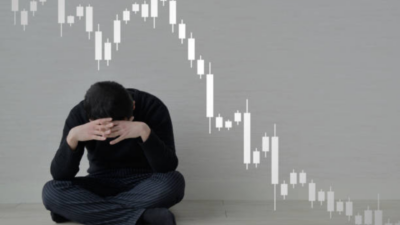Time to think about equity duration: Epoch
The last two years have seen an “anomaly” in equity markets where stocks with no dividends were king. But those who “kept the faith” might finally be rewarded.
The concept of duration, while intrinsic to fixed income, doesn’t get much of an innings in equities. But John Tobin, managing director and portfolio manager at Epoch Investment Partners, believes it will be vital for navigating rising interest rates and the share market volatility they likely entail.
Duration in equities – as Tobin defines it – is the length of time it will take dividends to repay the cost of the initial investment; the ones paying an attractive dividend now are shorter-duration and less sensitive to changes in the discount rate, while growth stocks with cashflows that lie somewhere in an uncertain future are longer duration and so more sensitive.
“Bond investors know that in a rising interest rate environment, the thing to do is shorten duration,” Tobin said on Wednesday (February 16). “Our argument is that equity investors need to be thinking about the risks in their portfolio from holding long duration equities in a rising rate environment, especially long duration equities that have experienced significant price appreciation and multiple expansion in the past year or two.”
A 2021 study in the Journal of Accounting Research found that short duration stocks were pummelled during the immediate drawdown in March 2020 due to the perception that it would be a short-term disruption and so it would be near-term cashflows that would be impacted most heavily rather than cashflows nine or ten years from now.
Another study found that, in the period between 1994-2019, companies with growing dividends offered the highest return, while those with zero dividends – and dividend cutters – offered the lowest. But in the period between January 2020 and December 2021 that relationship has flipped, so that stocks with zero dividends provided the highest return.
“This anomaly of the past couple of years is puzzling until we start to think about things through this lens of duration,” Tobin said. “… It really is just the flipside of the short duration equities getting hit in the onset of the pandemic. What this is telling us is that long duration equities were outperformers in a period of artificially low interest rates.”
“The math is straightforward and irrefutable: for a given increase in interest rates, the impact on present value is greater for cashflows in the distant future. And that’s foundational as we think about duration as a concept and the applications it has for equities in the current environment.”
Tobin believes that offers a chance at “salvation” for those who believe they’ve kept their heads on through a period that is increasingly being recognised as an asset price bubble; those who invested in companies with a history of growing cashflow and which demonstrated “the behaviour around sound capital allocation.”
“The evidence is that the high dividend yield factor actually has higher average relative performance in periods when the three-month Treasury Bill yield is rising than when it is falling,” Tobin said. “Perhaps for many that is surprising and counter-intuitive; we tend to think that dividend stocks are going to get hit by rising rates. The evidence suggests the opposite.”
Tobin noted that dividends have historically contributed over 40 per cent of equity returns and believes they’ll likely become more significant as the era of extraordinary PE expansion comes to an end.
“This was in the book that (Epoch founder) Bill Priest wrote way back in the beginning: the long-term drivers of equity returns are dividends and earnings,” Tobin said. “PE multiples expand and contract, but over time that effect tends to wash out, and what you’re left with is the long-term drivers of returns: earnings, which are almost always positive; and dividends, which are always positive.”











